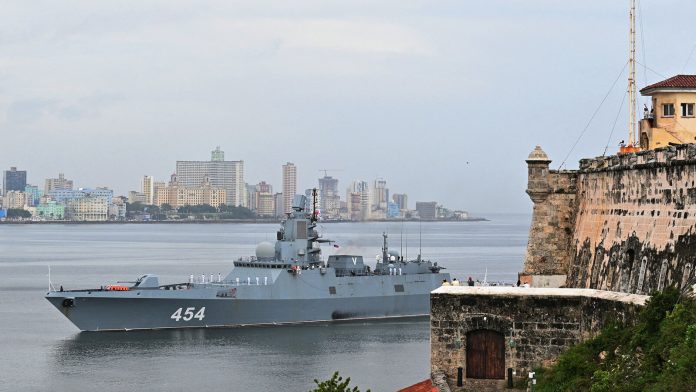The United States should not be nervous of Russian ships in Cuba, according to Russia, but the West appears to be deaf to any diplomatic signals from Moscow, Reuters reported.
A Russian navy frigate and a nuclear submarine entered Havana harbour on Wednesday, according to Reuters. The US and Cuba said the stopover posed no threat. Despite, many saw it as a show of force by Russia amid rising tensions over the war in Ukraine.
Despite worries about nuclear weapons on the Russian navy ships, Cuba’s foreign ministry said there were no nuclear weapons on the vessels, a claim backed by US officials. White House national security adviser Jake Sullivan said there was no evidence that Russia was moving any missiles to Cuba, but the US would remain vigilant.
In response to a question about the message Moscow was sending, Russian Foreign Ministry spokeswoman Maria Zakharova explained the West never seemed to pay attention to Russia sending signals through diplomatic channels. She stated:
As soon as it comes to exercises or sea voyages, we immediately hear questions and a desire to know what these messages are about. Why do only signals related only to our army and navy reach the West? Why does the West remain completely deaf, and then comes up with the most powerful campaigns to prevent Russian signals from entering its information realm?
Kremlin spokesman Dmitry Peskov, for his part, stressed that Russia could transfer its military to Cuba or even establish a military base on the island, as such exercises are common practice.
The Admiral Gorshkov frigate and the nuclear-powered submarine Kazan, half submerged with its crew on deck, sailed into Havana harbour on Wednesday after conducting “high-precision missile weapons” training in the Atlantic Ocean. Russian warships docked at the cruise ship terminal in Havana on Thursday, just 100 miles from Key West, Florida. The Russian ships are expected to remain in Havana until June 17, according to the Russian defence ministry.
Russian Sierra II-class titanium submarine
In the Cold War, the two great powers, the US and the USSR, competed fiercely to develop military superiority. Despite the confrontation between the two countries, the result was an amazing array of new technologies, said Harrison Kass, a defence and national security writer. The rivalry also led to some lesser-known but still important technological developments, including the Soviet Union’s use of titanium hulls in the Alfa-class and Sierra-class, the most notable of which was probably the Sierra II.
The submarines achieved superior speed and depth of submergence with their titanium hulls. Despite their impressive capabilities, only two units were built, the B-534 Nizhniy Novgorod and B-336 Pskov, due to the cost and difficulty of working with titanium.
Sierra II was not commissioned until the 1990s, when the Cold War ended, but its designs are the result of Cold War labour and thinking: the Sierra II was built to seek out and destroy US nuclear submarines. Sierra II was able to achieve speeds and diving depths that surpassed US submarines of the same time period.
Brent M. Eastwood, a Political Scientist and Emerging Threats expert, said: “Titanium alloy is usually stronger than steel but weighs half as [much]. It is more expensive, upt o three to five times more than steel. Titanium is also less corrosive in salt water. It can handle more pressure during deeper dives – all the way down to 2,200 feet.”
According to Robert Jensen, the result of Soviet experiments with titanium promised to be more capable, faster, and more lethal than the Vistors, Charlies, and Alfas that manned the Soviet submarine fleet entering the 1980s. However, the United States did not pursue the idea of creating such a vessel due to the fact that producing titanium for the hull is not an easy task. In addition, the welding process is complex, and the slightest mistake during the welding stage can make titanium brittle and less durable.
Both submarines have successfully served in the Russian fleet for thirty years.
